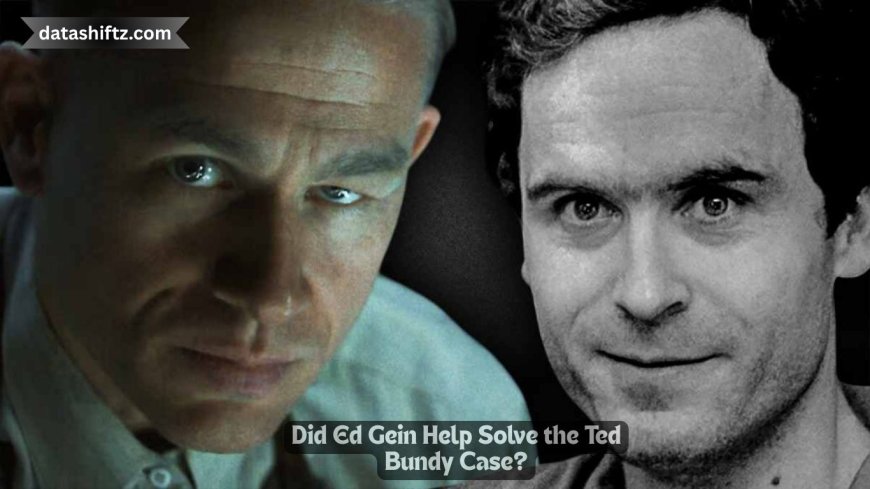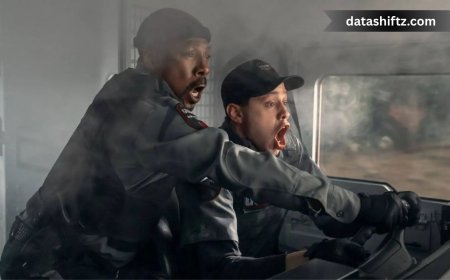Did Ed Gein Help Solve the Ted Bundy Case?

In recent months, a fascinating and quite controversial storyline has triggered curiosity among true‑crime aficionados: in the Netflix series Monster: The Ed Gein Story, Ed Gein is portrayed as assisting with the capture of Ted Bundy. But how much of that is rooted in reality? In this blog post, we’ll examine the facts, the fiction, and the legacy of both killers — and consider whether Ed Gein in any way helped to “solve” the Bundy case.
The Fiction vs. Reality
Portrayal in Monster: The Ed Gein Story
In Monster, particularly in its final episodes, Ed Gein (while institutionalised) is visited by FBI agents John Douglas and Robert Ressler. According to the show’s narrative:
-
Gein receives a letter from famed killer Richard Speck, which mentions a serial murderer going by “Ted” or “Teddy.”
-
Gein studies newspapers and other sources, discerns clues, and forwards information to the authorities.
-
Ultimately, the series implies that this input helps identify and lead to the arrest of Ted Bundy.
This plot device heightens drama and draws symbolic lines between two infamous killers. But it is not grounded in documented history.
Historical & Criminal Records
Facts about Ed Gein
-
Ed Gein was active primarily in the 1950s in Wisconsin, with his arrest in 1957.
-
He was convicted (or rather adjudged) of murder, but declared legally insane, and spent the remainder of his life in psychiatric institutions.
-
The FBI’s Behavioural Science Unit (or Behavioral Analysis Unit) as popularly understood was developed decades later; Gein was not associated with those later structures.
Facts about Ted Bundy
-
Bundy carried out his crimes largely in the 1970s, across multiple states.
-
He was arrested in 1975 (after attempting to flee a traffic stop in Utah) and linked to multiple murders.
-
There is no credible record or archival document indicating that Ed Gein ever contributed to or was consulted in the Bundy investigation.
In short: the storyline in Monster is a dramatic, fictional invention. Gein played no known role in solving or contributing to Bundy’s capture in real life.
Why the Series Adds That Link
-
Narrative Symbolism & Drama: The creators likely wanted to evoke a sense of legacy among killers, exploring how one notorious criminal might “influence” or echo in the next.
-
Psychological Metaphor: In Monster, the twist helps underscore Gein’s blurred perception of reality — creating a parallel between his delusions and the sensational crimes around him.
-
Exaggerating Influence: It amplifies Gein’s status in the public imagination of serial killers — turning him into a “proto‑guru” for subsequent murderers.
Interestingly, critics and fact-checkers have flagged this as one of the show’s more significant departures from truth.
Indirect Influence: Profiling, Forensics & Legacy
While Gein had no direct role in the Bundy investigation, his crimes did leave ripples in the field of criminal psychology and forensic understanding. It’s here that we can cautiously speak of influence rather than involvement.
Comparing Gein’s Legacy and Bundy’s Investigation
| Aspect | Ed Gein / His Case | Relevance to Bundy & Later Crimes |
|---|---|---|
| Time period | 1950s, Wisconsin | Earlier era — before Bundy’s era |
| Nature of crimes | Grave‑robbing, corpse mutilation, necrophilia | Unusual and shocking behaviors expanded awareness of extreme criminal pathology |
| Legal outcome | Institutionalization (deemed insane) | Did not lead to capture of other criminals |
| Use in psychological studies | One of the early extreme criminals studied | His case supplied mental health and behavioral crime literature |
| Direct involvement in Bundy case | None | No evidence that he was consulted, interviewed, or contributed |
| Influence on criminal profiling | Provided extreme example of pathological behavior | Used in academic, forensic, and public discussions of serial killers |
From this, we observe that Gein’s imprint is more symbolic, theoretical, and illustrative, rather than actionable or procedural, in relation to Bundy’s capture.
Indirect Paths of Influence
-
Forensic and Psychological Paradigms: Gein’s bizarre and horrific acts challenged law enforcement to think differently about motives, signature behavior, and the psychology of deviance. These emergent frameworks likely informed later profiling techniques.
-
Public Awareness & Media Sensationalism: The media frenzy following Gein’s exposure helped cement the image of the “monster within,” which in turn shaped how subsequent serial crimes were reported and investigated.
-
Comparative Study in Academia: Criminologists and researchers often compare extreme cases, and Gein is sometimes referenced when exploring deviant behavior, pathology, and escalation. That said, referencing a case is not the same as solving a later case.
Thus, one can argue that Ed Gein was part of the bedrock of extreme criminal pathology study, but not a participant in the Bundy case.
Key Takeaways
-
The show’s plot is fictional — There is no verified record that Ed Gein aided in the investigation of Ted Bundy.
-
Temporal separation — Gein was arrested in 1957, decades before Bundy’s crimes escalated in the 1970s.
-
No documented contact — FBI agents Douglas and Ressler never visited Gein in relation to Bundy.
-
Indirect influence only — Gein’s case may have influenced criminal psychology, but did not directly contribute to Bundy’s capture.
-
Creative license is common in true‑crime adaptations — Films and series often bend or invent connections for narrative effect.
Conclusion
So, did Ed Gein help solve the Ted Bundy case? In real life: no. The depiction in Monster: The Ed Gein Story of Gein playing a pivotal role in identifying Bundy is a creative embellishment, built for dramatic storytelling rather than historical accuracy.
That said, Gein does occupy a place in the broader evolution of criminology and forensic psychology — his extreme case has served as reference material, cautionary example, and object of academic inquiry. Bundy’s capture, on the other hand, was the result of conventional police work, behavioral profiling, interjurisdictional cooperation, and investigative diligence, unconnected to any active role by Gein.





























